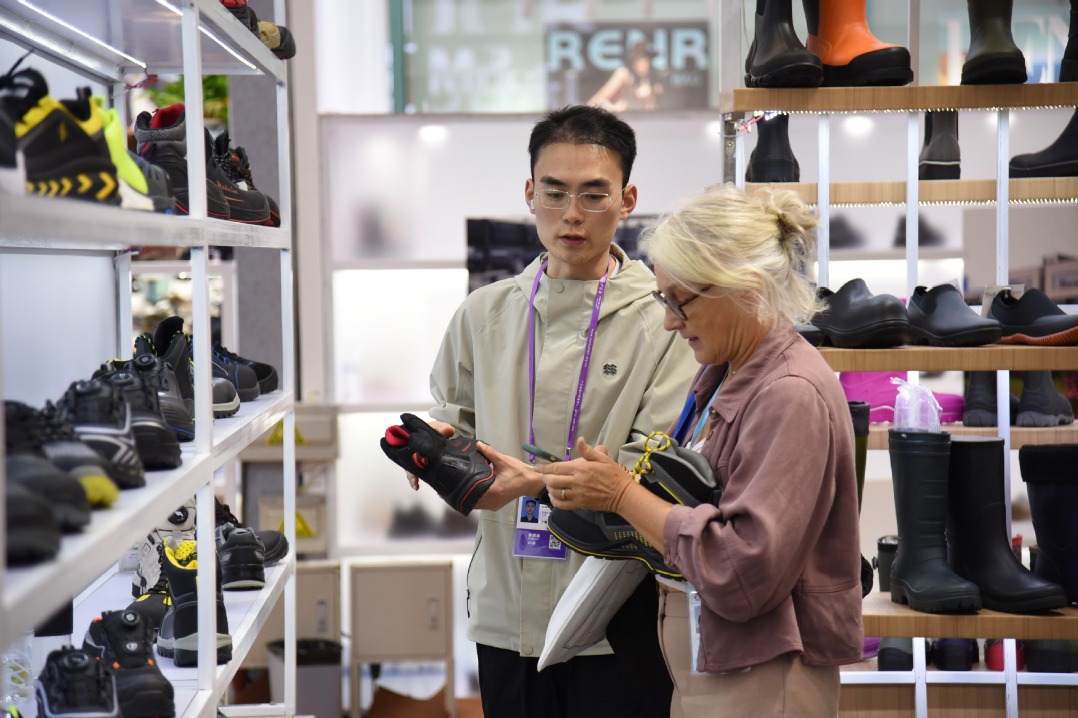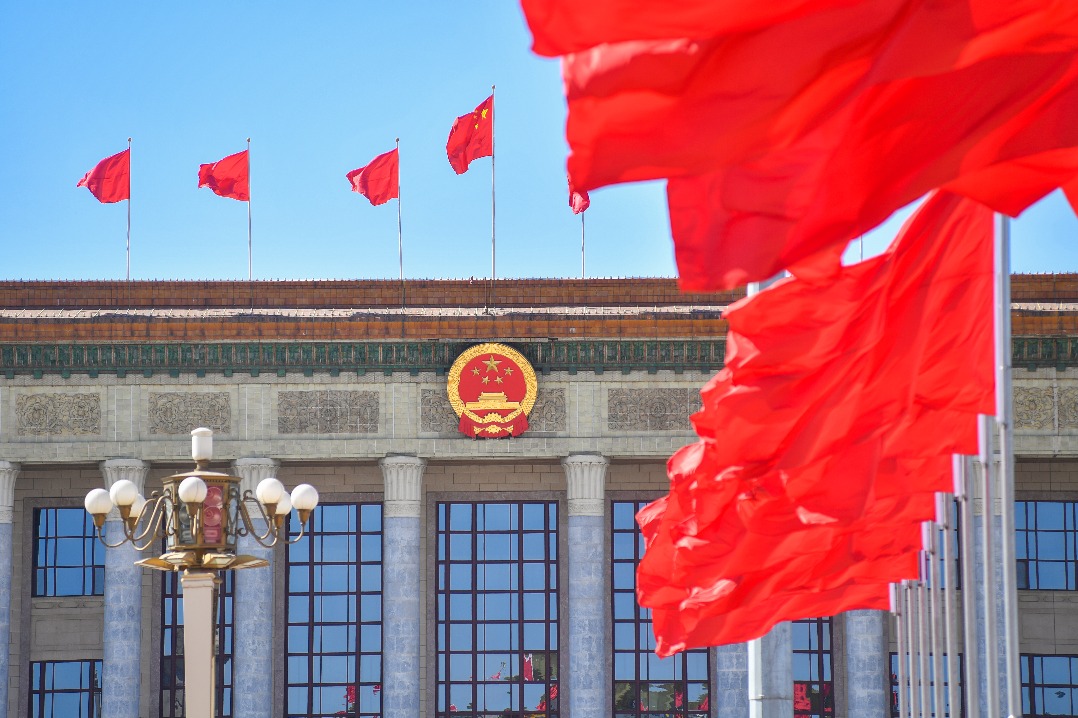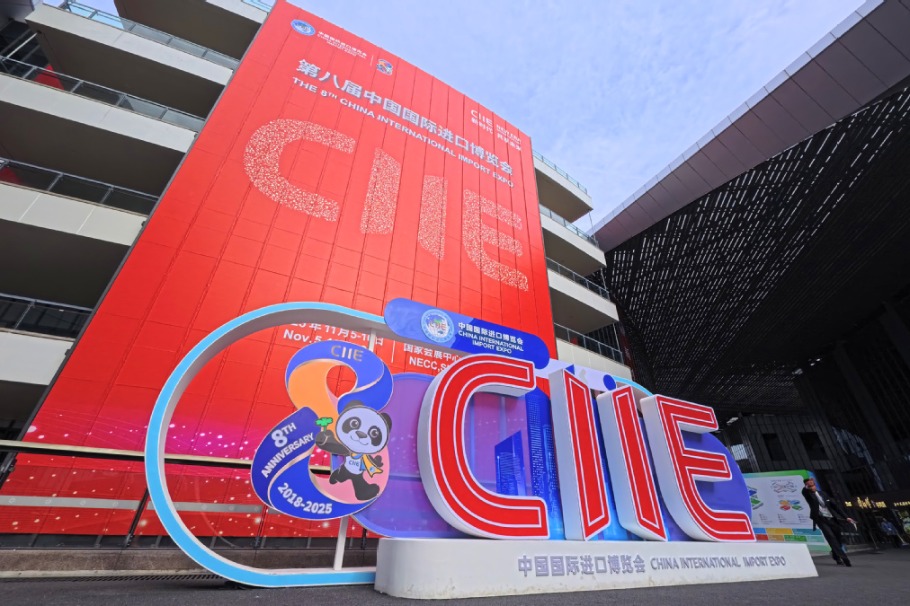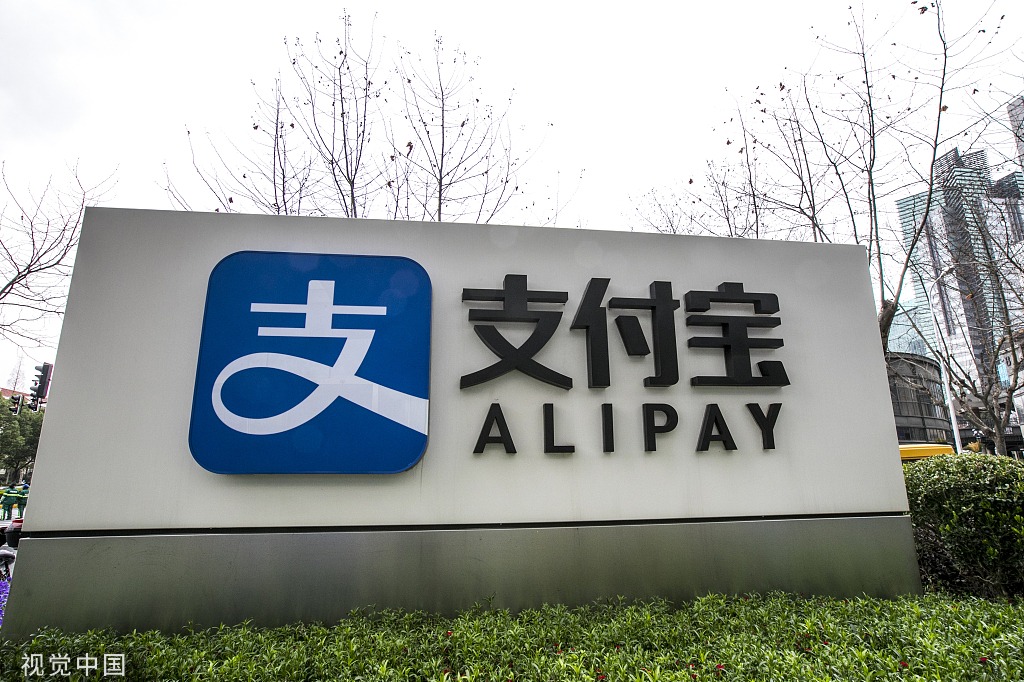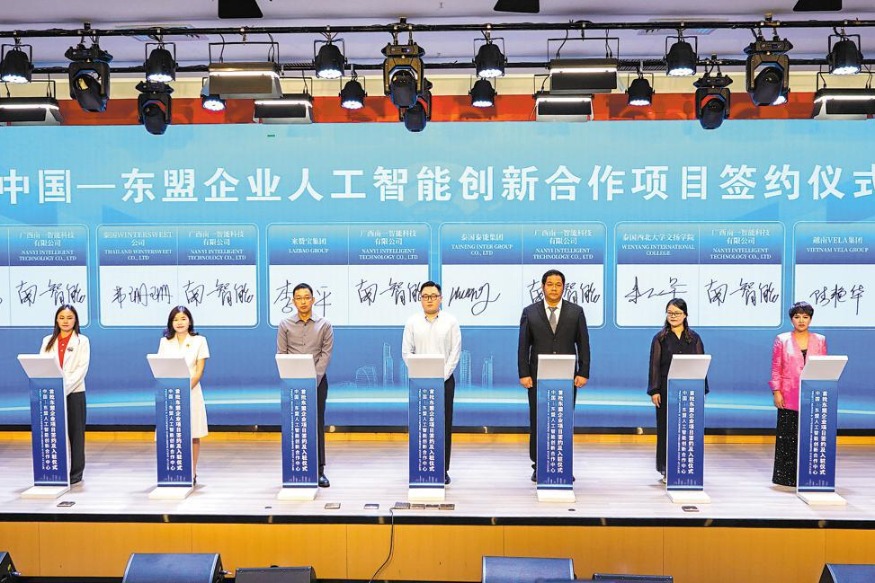SMEs band together to expand into B&R countries

 |
| A visitor checks a bracelet at a previous fair for small and medium-sized enterprises in Guangzhou. Photo provided to China Daily |
In its early days in Vietnam, the manufacturer used a consulting service to help choose a site location, negotiate with the government and navigate legal and banking issues.
After the second phase of the subsidiary, Brotex (Viet Nam), went into operation and started selling.
During its third phase, the company secured a $40 million loan - $28 million from the Ningbo Branch of Bank of China and $12 million from Ho Chi Minh Branch.
Brotex later established the Phuoc Dong Business Park-Ningbo Park in cooperation with another Ningbo textile company, Shenzhou International Group. The park encouraged textile and clothing enterprises to move to the Vietnam industrial park to find their feet. Brotex started to act as the Vietnamese liaison office for its fellow Ningbo enterprises.
Brotex is just one example of a Chinese small and medium-sized company helping others in their field expand overseas to countries involved in the Belt and Road Initiative.
"With the rising opportunities brought by the Belt and Road Initiative, a new trend on Chinese companies' road towards going global is that more small and medium-sized enterprises have been attracted to group together, heading to the overseas market,"said Ren Yueyuan, a researcher at the Center for China and Globalization.
Proposed by President Xi Jinping in 2013, the Belt and Road Initiative aims to promote the inter-connectivity between Asia and the rest of the world through two ancient trade routes, the Silk Road Economic Belt and the 21st Century Maritime Silk Road.
According to Ministry of Commerce data, China's trade with economies involved in the Belt and Road Initiative grew 26.2 percent year-on-year in the first quarter of 2017.
During the same period, China's non-financial outbound direct investment in 43 economies involved in the initiative reached $2.95 billion, accounting for 14.4 percent of the country's total outbound investment.
"Compared with large enterprises, SMEs are more cost sensitive and care more about short-term returns. In order to facilitate their overseas operations and solve their concerns, a good practice is for them to gather together to lower cost and risks," Ren said.
China’s 2011 regulations on SMEs established different definitions of SMEs in different industries based on the number of employees, revenue and total assets.
For example, according to the guidelines for the industrial sector, SMEs employ a maximum of 2,000 people and have an annual revenue not exceeding 300 million yuan ($43.66 million), Professor Wei Jiang from the School of Management at Zhejiang University, said.
"Due to SME's limitation of size and capital, support from the government level and cooperation with public sectors are important for them to go global," Wei said.
"Apart from gathering together all the SMEs to forge an industrial park like what Bros Eastern did, SMEs could also integrate to projects opened up by SOEs (State-owned enterprises)," Ren said.
SOE's efforts should be matched with support from SMEs in the construction of infrastructure, such as high speed trains in Africa. For example, every high speed train needs more than 100,000 parts which is impossible for the CRRC Corporation alone. In that case, the CRRC Corporation could be the leading enterprise to guarantee financing and loans for its supporting SMEs, either domestic or overseas subsidiaries, to gain access to policy-based financial resources, according to Ren.
Advantages of SMEs, such as their fast production cycle, flexible corporate governance and low costs, could be maximized in their integration with the Belt and Road Initiative, Wei said.
However, Wei also warned that there are risks for SMEs, such as the painful localization process and adjusting to different cultures, values, and institutions. There are also different law systems and regulations in different countries, as well as the labor issue, and capital guarantee.
Wei believes that to solve such difficulties, a series of services ranging from international financial and business services to personnel training must be provided to facilitate the localization of Chinese companies.
According to Wei's newly released book, Innovation Globalization of Chinese Firms, Chinese technology SMEs are facing an unsymmetrical status quo of lagged technology, institution and marketing. With a lack of international talents, Chinese technology SMEs must adopt a smart and globalized administration system to catch up with their international peers.



















